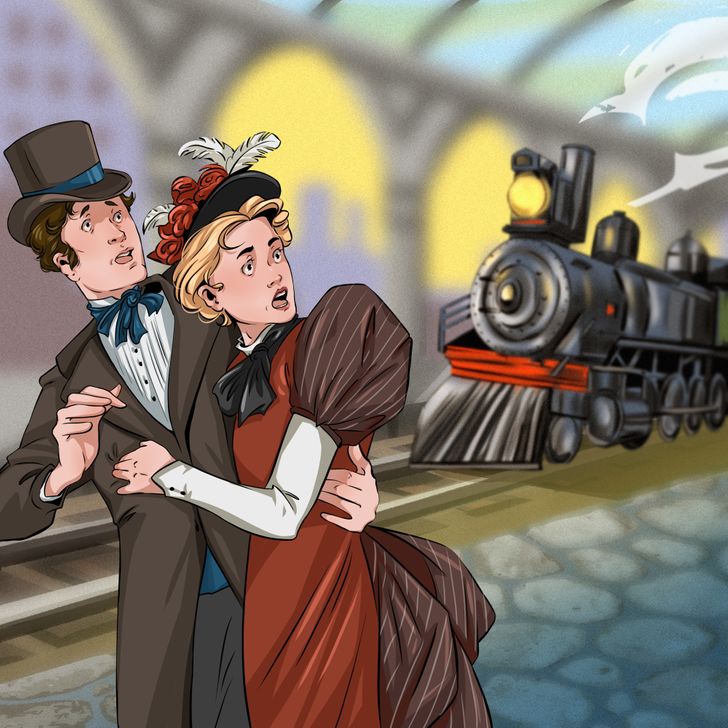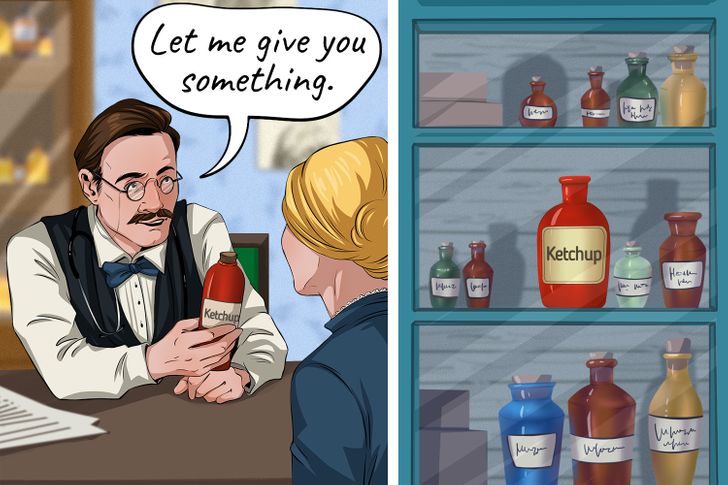Sheep on plants?????????????
7 Historical Facts We Wish We’d Known Back in School

A lot in the world has changed with the recent technological and cultural progress. For that reason, looking back at history, you may find yourself a little confused and amused by the myths people believed in, the ways they coped without useful devices we have today, and the things that were around for longer than you originally thought.
1. People believed that lambs grew on trees.
In the Middle Ages, people used to think that there were plants in Central Asia that grew lambs on them. This belief came to life due to the lack of knowledge about where cotton came from — people who lived very far from Asia assumed that it grew on plants. Funnily enough, there were discussions about if the lamb, in this case, would be considered a living being or a fruit, and it was concluded that it would be both.
2. People thought a woman’s uterus would fly out if she traveled by train.

Technological progress can be a scary thing, especially at the early stages — there are a lot of aspects of the new invention that are not known yet. So when the trains were invented in the nineteenth century, there was talk that a woman’s body was not designed to go at the speed of 50 miles per hour because her uterus could fly out. For the record, that, of course, did not happen.
3. Medival Europeans believed that being touched by a royal could cure them.

4. British miners used to take canaries in coal mines with them, and they even had a way to resuscitate the birds.
In the twentieth century, it was a tradition for miners to take a canary into coal mines. The reason for this is simple: birds are more sensitive to poisonous gas than humans. So in case something was wrong in the mine, the miners would know immediately by the reaction of the bird.
However, it does not mean that the bird had to die for the sake of warning the miners. The canary was placed in a device that had an oxygen tank in it. The way it worked was when entering a coal mine, the device would be opened, and if the bird showed signs of being poisoned by gas, the miners would close the device and the oxygen tank would start pumping the air, reviving the bird.
5. British people believed spaghetti trees existed.
This incident is not the fault of fake science and it happened not so long ago. In the late 1950s, the BBC news program decided to pull an April Fools’ prank that was talking about people growing spaghetti on trees. The general public ended up taking this joke as a fact since, at that time, the British did not know much about spaghetti.
The myth became fully disproved by the 1960s, with the food becoming a more common cuisine.
6. Almond milk not only existed during medieval times, but it was also very popular in Europe.

It would be understandable if you thought the almond milk obsession was a new thing, however, that’s not correct. As a matter of fact, people in Medival Europe loved almond milk to the point that you could find it listed as a necessary ingredient in just about every cookbook. Almond milk was not only more prevalent than cow’s milk, it was also something people could eat during lent when all dairy is forbidden.
7. Ketchup was used as medicine.

When ketchup was first invented in the nineteenth century, its recipe originally consisted of mushrooms and fish, but Dr. John Cook Bennet suggested using tomatoes in it, and the sauce developed into what it is now. However, at first, it was believed that ketchup could be a cure for various things, such as diarrhea and indigestion. It was even sold in pills.
The myth was busted when people started to discover the amount of mold, yeast, spores, and bacteria the barrels of tomato pulp had. And to prevent this, they’d include boric acid, formalin, salicylic acid, benzoic acid, and coal tar, and would cook it in copper tubs. Little did they know, this was just as dangerous to their health.
Which fact surprised you the most? Do you know any strange historical facts you want to share?
Comments
Related Reads
18 Hilariously Unexpected Text Replies

18 Sneaky Traps Supermarkets Set for Us

18 Pieces of Advice Worth Giving to a Kid Before They Grow Up

10+ Brutally Honest Illustrations That Offer a Mirror to the Modern World

19 Mysterious Things From the Past That Required a Bunch of Smart People to Find Out Their Meaning

20+ Photos That Prove You Don’t Need Plastic Surgery to Look Stunning

21 Common Objects With a Twist That Caught Our Attention

10 Moments That Remind Us Quiet Kindness Is Mightier Than It Seems

I Refuse to Keep Supporting My Daughter and Her 5 Kids for Free

20 Moments When Kindness Stepped In Like a Guardian Angel

I Caught My MIL Secretly Filming Me While I Breastfed My Baby

18 Employees Who Saw Their Choices Backfire Hard

